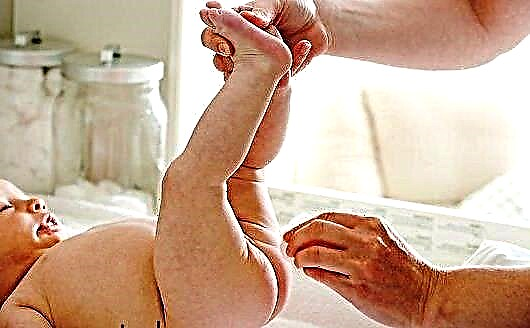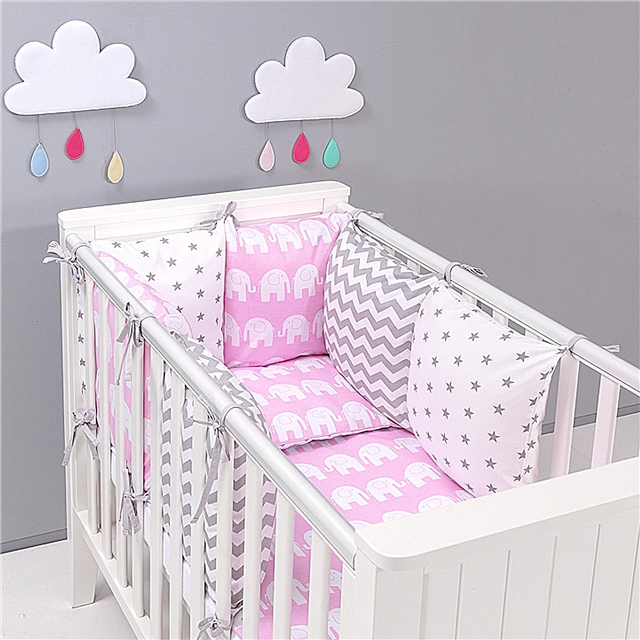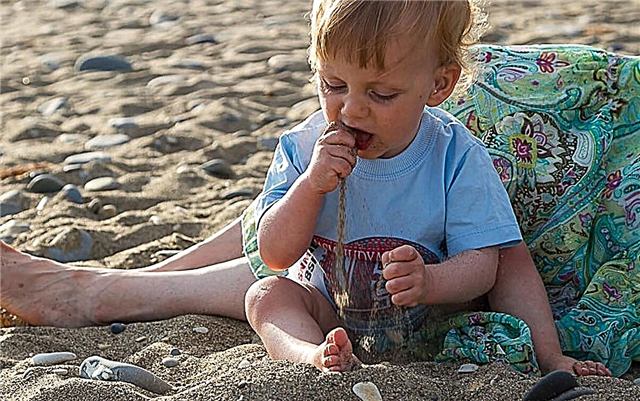
A runny nose in children accompanies a great variety of diseases and is rightfully considered one of the most frequent "childhood" symptoms. All parents know that it can be very diverse - from dry to plentiful, and by the color of nasal mucus - from transparent to gray and yellow-green to purulent.
Often, parents do not know what to give a baby if he has green nasal mucus. And with this question they turn to the famous pediatrician Yevgeny Olegovich Komarovsky.

A runny nose in children is so common that experienced moms and dads no longer cause panic. However, it is also impossible to relax, since timely assistance with rhinitis (this is what doctors call a runny nose) will help to avoid serious complications. By the color of the nasal mucus, it is quite easy to determine the origin of the common cold and even guess its causes. This knowledge will make it possible to treat the baby correctly. Let's see why a child's snot can be green.
And Dr. Komarovsky will help us to more clearly understand the reason for the formation of nasal mucus in the next video.
In 9 out of 10 children, a cold is caused by viruses. Viral rhinitis is the undisputed leader among childhood ailments. The fact is that viruses enter the child's body most often through the nasopharynx and very rarely through the eyes. Natural protection is arranged in such a way that immediately after penetration into the nose, mucus begins to be produced, the task of which is to stop the invasion and prevent further penetration of viruses. Much mucus is produced in this situation, it is transparent and liquid. At the very beginning of a respiratory viral infection, parents say about such a phenomenon "it flows from the nose."

Evgeny Komarovsky emphasizes that liquid, abundant mucus is completely harmless to the baby, the main thing is not to allow it to thicken or dry out. Since it is in the dried mucus that such an amount of protein is contained that it becomes very easy for different bacteria in it. This is where the color of the snot changes.

Thick and green mucus speaks of the bacterial nature of the common cold or its mixed nature - viral-bacterial. The color in this case is due to the presence of dead bacteria and dead neutrophils, which were thrown by the immune system to protect against infection. The greener the color palette of nasal discharge, the more likely mixed rhinitis is. Yellow-greenish snot always speaks only of the bacterial form of the disease.
Is it necessary to take antibiotics with green snot, Dr. Komarovsky will tell in the next issue.
With a viral rhinitis, lymphocytes predominate in the mucus, with a bacterial - neutrophils, with an allergic - cells - eosinophils. Knowledge of this allows, according to Komarovsky, to find the true cause of protracted rhinitis and poorly responding to one or another treatment. Mucus is taken from the child's nose to the sowing tank, and by the number of certain cells - defenders, they determine what exactly the baby's body is trying to defend itself against.

As already mentioned, the green color of mucus appears when dying neutrophils secrete a special substance, which gives the snot such a color. Therefore, Komarovsky recommends that the appearance of green snot be considered a rather favorable sign - it indicates that the protective cells have already begun to perform their immediate duties.

About bacterial rhinitis
It usually occurs after the parents have failed to maintain the liquid consistency of nasal mucus during a viral infection. But sometimes bacteria are solely to blame for the causes of the appearance. This rhinitis is characterized by some special symptoms: at an early stage, the nose “itches”, the child begins to sneeze and scratch his nose, as with an allergy. This stage, in contrast to the allergic form of the disease, does not last long - about 2-3 hours, after which, over 3-5 days, liquid transparent mucus is secreted from the nose, which quickly begins to thicken.
Nasal congestion appears, the child's nasal breathing is disturbed due to swelling inside the nasal passages, lacrimation, headaches may begin, appetite decreases, the ability to distinguish odors completely or partially disappears. At the final stage, you can observe the very green and yellow nasal discharge, which has already become quite thick.

In infants, especially at the age of 1-3 months, a runny nose can also be physiological, due to adaptation to a new environment for it.... All procedures for such babies should be carried out only after consultation with the attending physician, but the general approach to the treatment of infants is the same as in the treatment of older children.

Treatment
How to treat a runny nose, accompanied by green discharge, is best told by a doctor who can establish the true cause of the disease. It can be pharyngitis and sore throat. The task is to prevent complications that can be quite serious - otitis media, sinusitis quite often appear after a bacterial rhinitis, which was treated incorrectly or not at all.
Dr. Komarovsky will tell you how to cleanse a children's nose of mucus in the next video.
Mommies have a rather polar attitude to snot: some consider it a serious ailment and immediately start demanding antibiotics, others are sure that a handkerchief in their pocket will cope with rhinitis, and you can even take such a kid with green snot to kindergarten.

Evgeny Komarovsky urges parents to be prudent. There is no need to go to the above extremes. It is possible to treat a bacterial rhinitis without antibiotics, but it still needs to be treated.
It is better to postpone a visit to kindergarten or school during a runny nose with yellow and green snot until better times. And do the normalization of nasal mucus. This does not require expensive drugs, says Yevgeny Olegovich, sometimes it is enough just to create favorable conditions.

The mucus will not dry out and thicken if parents try to create humidified air at the level of 50-70% in the room where the baby lives. This can be done with a humidifier. It is not cheap, and if the financial capabilities of the family do not allow you to buy it, then you can get a special valve-valve for the batteries in the winter, and in any season you can hang out wet towels, put a bowl of water so that it evaporates freely, in the end, buying a small aquarium with fish will be both informative and useful.

In a hot room, the snot also dries up almost instantly and the infection begins to progress very quickly. Therefore, you should purchase and hang a room thermometer and make sure that the air temperature in the room does not fall below 18 degrees and in no case rises above 20 degrees.

Fresh air will also help to cope with a bacterial rhinitis. Instead of instilling antibiotics, Dr. Komarovsky advises to go for a walk. The more time the baby spends outside (naturally, in the absence of elevated body temperature), the faster the mucous membranes will become wet again, and the body will be able to resist bacteria to the fullest.

And one more “medicine” available to all is water... If the child drinks more, then the mucus will soon become liquid and will easily be naturally excreted from the nasal passages. Komarovsky recommends giving a drink at a temperature equal to the child's body temperature. So the liquid will be quickly absorbed and absorbed by the intestinal walls, which means that the result will not be long in coming.

About medicines
Parents think about pharmacy drops and sprays from the common cold first of all, as soon as the child's nose is blocked, says Evgeny Komarovsky. In fact, this does not need to be done without special instructions and prescriptions from a doctor. The most common cause of rhinitis is viruses, and therefore 90% of rhinitis in children should not be treated with any medication, the doctor believes, because antibiotics are ineffective against viruses, and vasoconstrictor drops too.
Doctor Komarovsky will tell you how to treat a nose in the issue below.
Without exception, all pharmaceutical remedies for the common cold only temporarily eliminate symptoms, but in no case cure the cause of rhinitis, says Komarovsky. Vasoconstrictor drops ("Naphtizin", "Nazivin", Nazol ", etc.) can generally cause drug addiction if used for more than 3-5 days. They require great care in their use, as they also have a number of side effects. Many drugs in this group are prohibited for children who are under 2 years old.
Often you can find recommendations for a bacterial rhinitis, be sure to start dripping drugs with antibiotics, such as "Framycetin", "Isofra" and others. These are good and effective drugs, says Komarovsky, but sometimes they are completely unnecessary. More precisely, in most cases they are absolutely unnecessary. If the child has purulent rhinitis, with a severe course, the doctor, of course, in addition to recommendations for rinsing the nose and walking, will prescribe antibacterial drops, and maybe even complex drops, which are prepared in pharmacies where there is a prescription department, strictly according to the doctor's prescription. But he will do this only after the bacterial test has been carried out in order to know exactly which bacteria need to be defeated as soon as possible.

If the doctor just like that, without preliminary tests, prescribes drops with antibiotics, and the child does not have purulent discharge from the nose, and all complaints are limited to green snot, then Komarovsky considers such treatment inappropriate.
The only reason to start selecting a pharmaceutical pharmaceutical product is allergic rhinitis. But even in this case, this should be done unambiguously together with the doctor, in no case independently.

Tips
Green snot can be avoided altogether, if you react on time and correctly to liquid and transparent discharge from the nose, which appear at the initial stage of rhinitis. Parents need to create the "correct" microclimate conditions, which were mentioned above, and more often additionally moisturize the nasal passages by rinsing the nose with saline solution or instilling in drugs to moisturize the nose - "Pinosol", "Ektericid" and the most common saline solution that can be purchased for a penny at any pharmacy. To prevent drying out, according to Evgeny Komarovsky, it is possible only with intensive instillation - half a pipette every hour in each nostril. There will be no harm.
As soon as possible, you need to teach the child to blow his nose. This skill will greatly help in the treatment of rhinitis. However, with a cold in a baby, you should not fall into despair due to the fact that the baby, due to age, cannot free the nose from snot. Pharmacies sell small aspirators that will help you quickly pump out excess mucus from your nasal passages.




